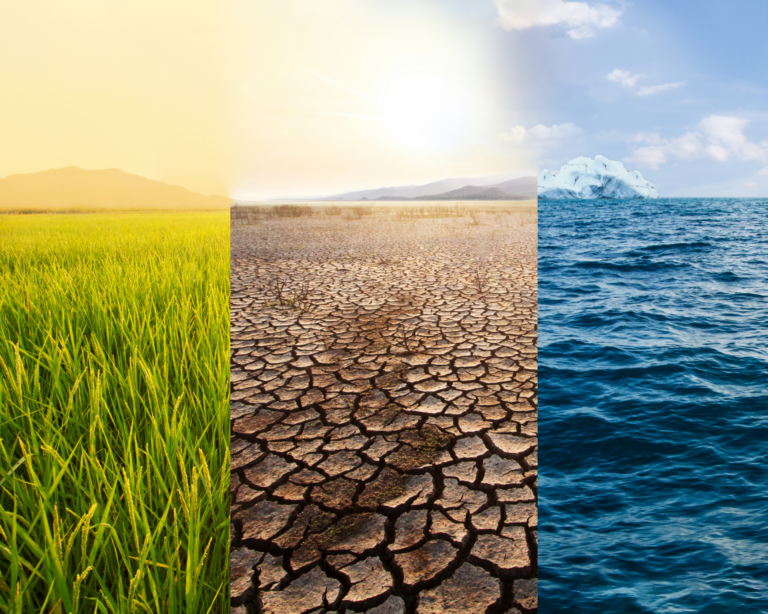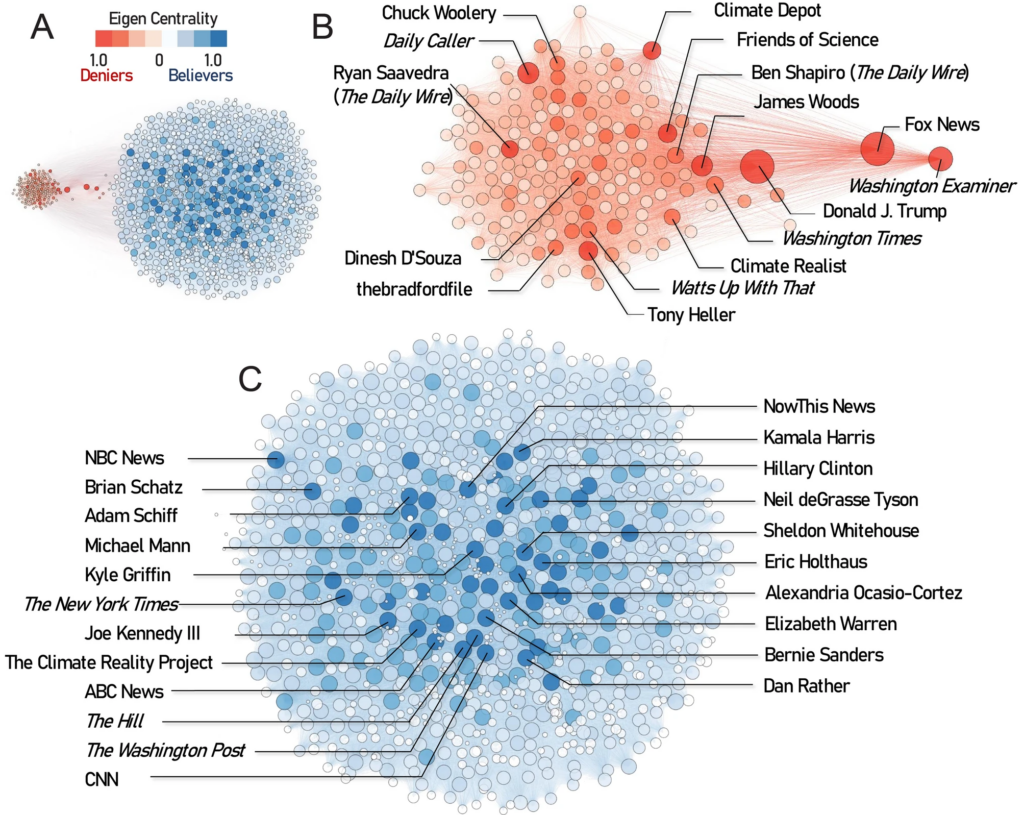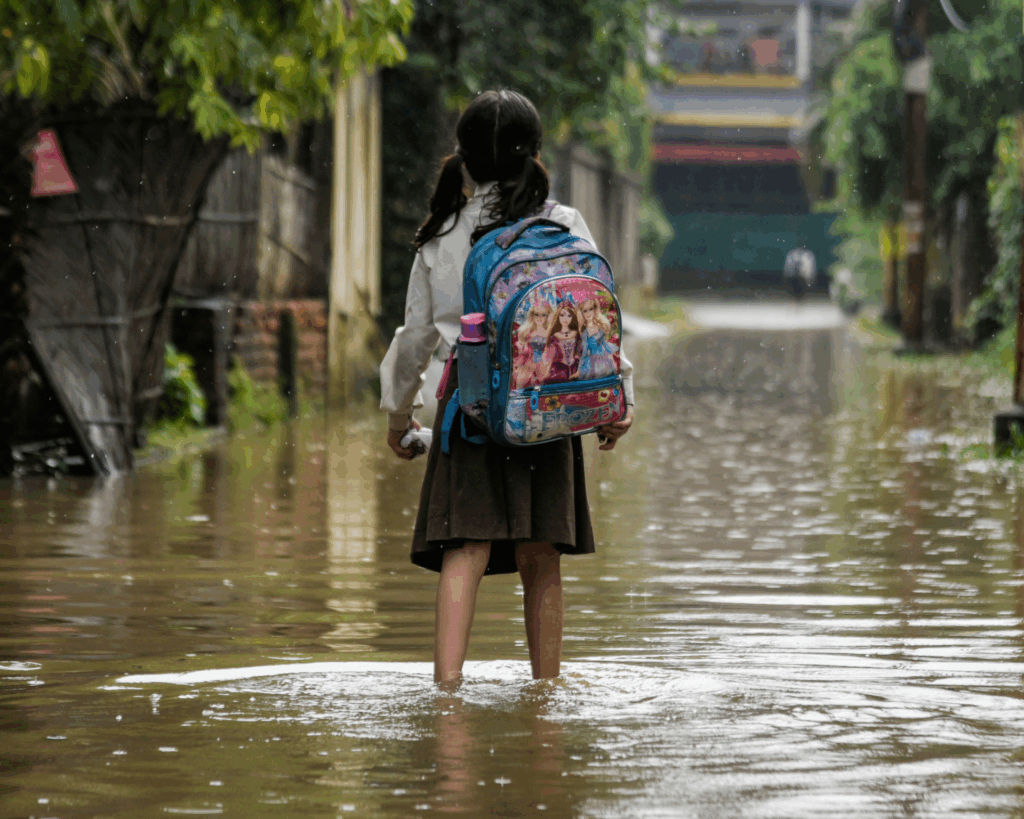The Anatomy of Climate Denial
While the climate change denier network is relatively small, it effectively enables climate-related misinformation to rapidly spread online.

Read Time: 2 minutes
Published:
Nearly 14% of Americans and 36% of the world population deny the existence of climate change. Climate change denial rejects the scientific consensus that human actions cause global warming, instead attributing it to natural processes. Political ideology, income, education, and exposure to extreme weather events can influence one’s denial or acceptance that our changing climate is human-driven.
The rise of climate change denial can be explained through agnotology, or the deliberate production of ignorance through disinformation, as defined by Dr. Robert Proctor on Alie Ward’s podcast, ‘Ologies.’ Misinformation is simply false information, while disinformation is intentionally misleading information. In the age of social media and billions of online users, the rapid spread of information, misinformation, and disinformation is not filtered by quality or accuracy.
Dimitrios Gounardis and Joshua P. Newell examined 7.4 million posts from 1.3 million X users between 2017 and 2019 to estimate the prevalence of climate denial in the U.S. To further elucidate how polarized opinions spread, the researchers used artificial intelligence to assess posts’ language and diction, classify them as ‘belief’ or ‘denial’, and create user networks, as shown in the figures below.

Nearly 200,000 posts expressed climate denial. Belief was strongest along the East and West coasts, while denial was highest in central and southern states, including Oklahoma, Missouri, Alabama, and North Dakota.
The believer community (1,029 users) was much larger than the denier community (171 users). The most retweeted posts expressing denial came from conservative media, unreputable news sites, and right-wing figures, including President Donald Trump, Fox News, and The Daily Wire. Among believers, top users included Alexandra Ocasio-Cortez, Kamala Harris, CNN, and The New York Times. Most notably, the two spheres of believers and deniers are entirely separate.
On a platform like X, users are more likely to engage with novel, yet false, information over the truth. This phenomenon promotes willful ignorance by granting false claims more traction than factual information. While the denier network is relatively small, it effectively enables climate misinformation to rapidly pervade online. Each false claim hinders meaningful action toward collective climate improvement. Understanding the spread of denial is crucial to tackle misinformation, and more importantly to guide environmental policy and ensure strategic resource allocation during extreme weather events and natural disasters.



